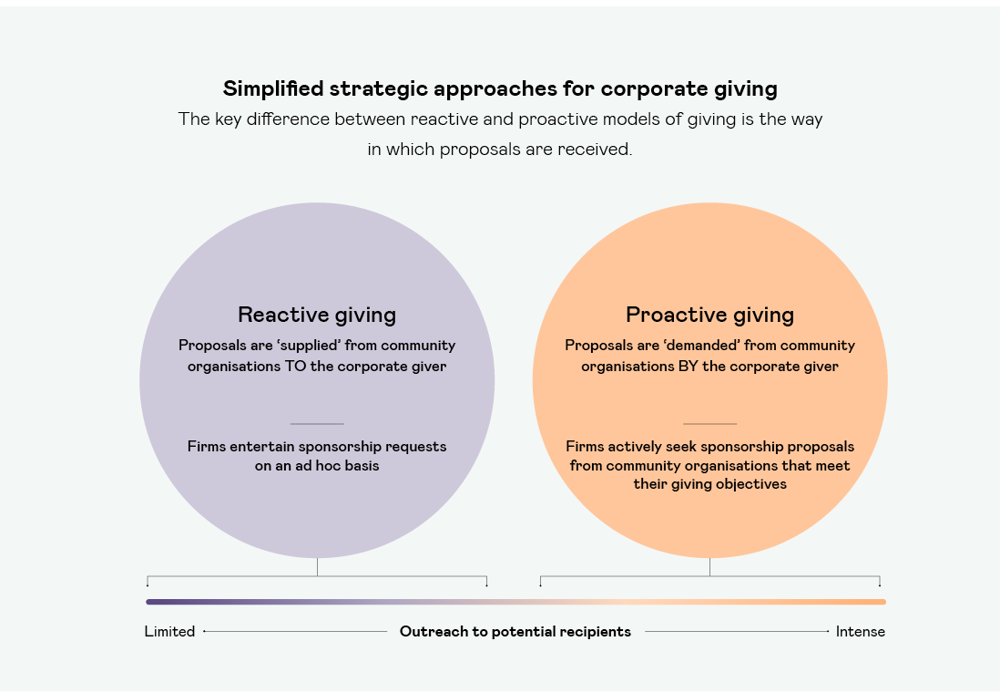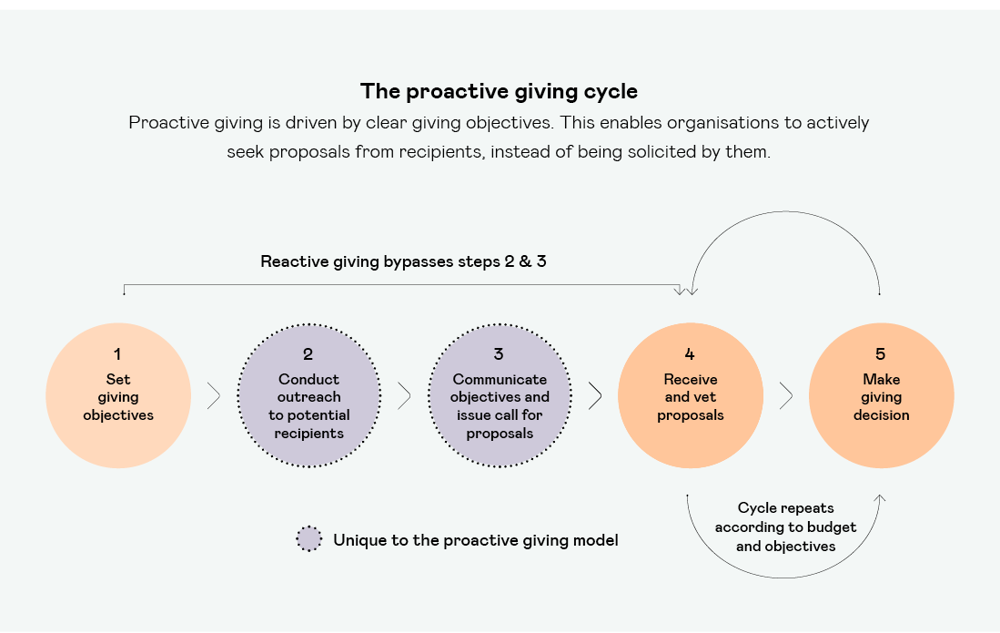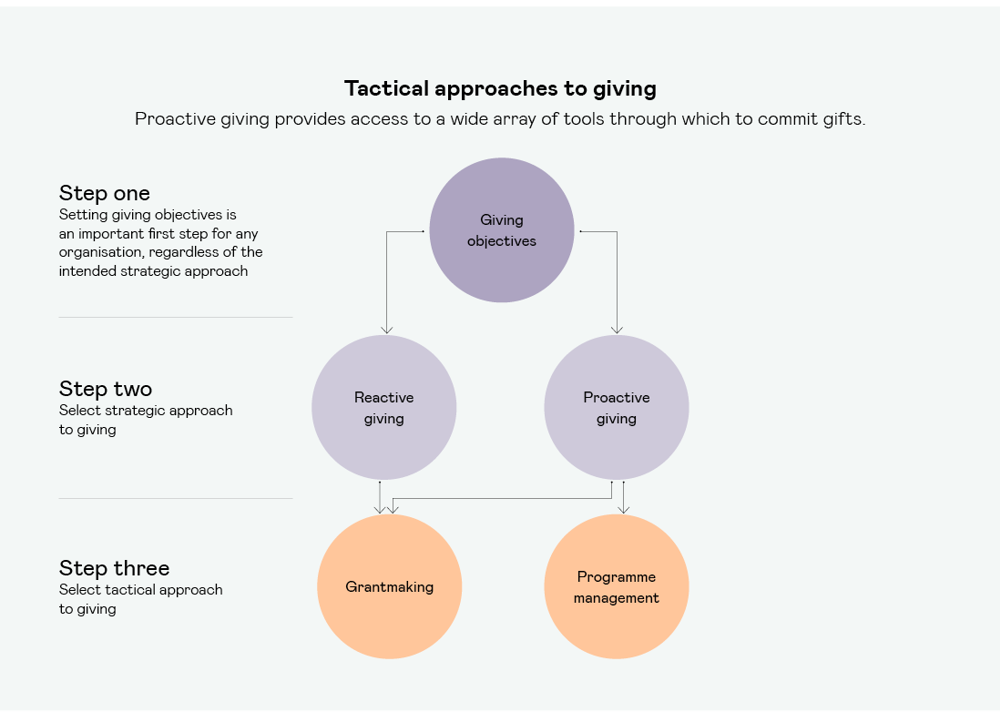Introduction
Steady growth in the nonprofit sector coupled with progressively collaborative approaches to global development characterise corporate philanthropy today. Now, more than ever, companies field a barrage of sponsorship requests from an expanding population of community organisations, schools, sports clubs, and even professional fundraisers.
These requests may be for financial resources, or perhaps volunteer time or even in-kind donations, all of which can underwrite any number of worthwhile events, programmes, or causes.
When managing corporate giving for your organisation, you may receive each request and initially reference your firm’s predetermined giving objectives for a quick eligibility test. You then carefully consider the merits of the request, sometimes within the context of defined parameters, if available, before deciding to write a cheque. This cycle repeats itself at varying pace throughout the year, generally peaking around the end of the calendar or financial year.
It is unlikely that your year-end budget draws down neatly to zero and you may find yourself in one of two troubling scenarios. Either you spend the last few weeks of the fiscal year struggling to find worthy outlets for the remaining funds; or you run out of budget early and must decline the inevitable end-of-year requests.
Regardless of how the fiscal year ends, this timeless approach is known as reactive giving. Its key characteristic is the reliance on unsolicited or generic proposals for corporate gifts. Reactive giving is driven by the supply of proposals from community organisations to your firm, rather than your demand for them.
This is not to say that reactive giving is flawed. In fact, this approach is testament to the generosity of the region and suits the needs of many firms, as well as the community organisations they support. Reactive giving can be impactful, particularly in emergency situations, and it is likely to remain a popular strategy.
However, since the reactive giving approach in the region is well practised and needs no additional tactical strategies to operate, we will turn our focus to the other end of the spectrum: proactive giving.
Fundamentals
Both reactive and proactive approaches begin with an examination of a corporate donor’s objectives. But that is where the similarities end. Unlike the reactive approach, which passively relies on unsolicited proposals to meet those objectives, proactive donors actively seek out proposals for support.
Proactive giving is demand driven, meaning funding organisations initiate outreach for proposals that will help meet their objectives. It allows the corporate giver to shape the impact it would like to have. Put simply, proactive givers do not wait for the fundraisers to call.

Engaging the community
When communicating your giving objectives and soliciting proposals from community organisations, it is important to acknowledge that community-based organisations (CBOs) tend to have a deeper understanding of the issues than donors.
It is helpful to keep requests for proposals (RFPs) flexible enough to allow responding organisations the freedom to help shape the solutions being sourced. This provides an opportunity for firms to benefit from the deep knowledge and experience often harboured by CBOs.
Critical to the success of this giving approach is access to a network of qualified CBOs who will understand your giving objectives and can respond to the call for proposals. Strong outreach is key to generating a robust pipeline of relevant, eligible recipients for corporate gifts.

Choosing a giving approach
Once the decision is made to follow the proactive approach, a host of opportunities become available with respect to ‘how’ an organisation can give. Two major tactical approaches to giving are grantmaking and programme management.
Grantmaking is a tool available to both reactive and proactive givers and can be a powerful method of delivering significant gifts into the stewardship of capable CBOs. It is a flexible approach that allows donors to give towards several causes or organisations without significant increases to internal capacities or headcount. Grantmaking is most effective when an organisation has access to a high-quality network of organisations to receive the grants.
Programme management requires an organisation to define and deliver programmes in line with its giving objectives. These can be basic programmes, such as food drives and scholarship schemes, or more complex long-term endeavours. Due to capacity constraints and /or comparative advantages held by CBOs operating in this space, corporates will often work closely with a set of partners to deliver their programmes.

